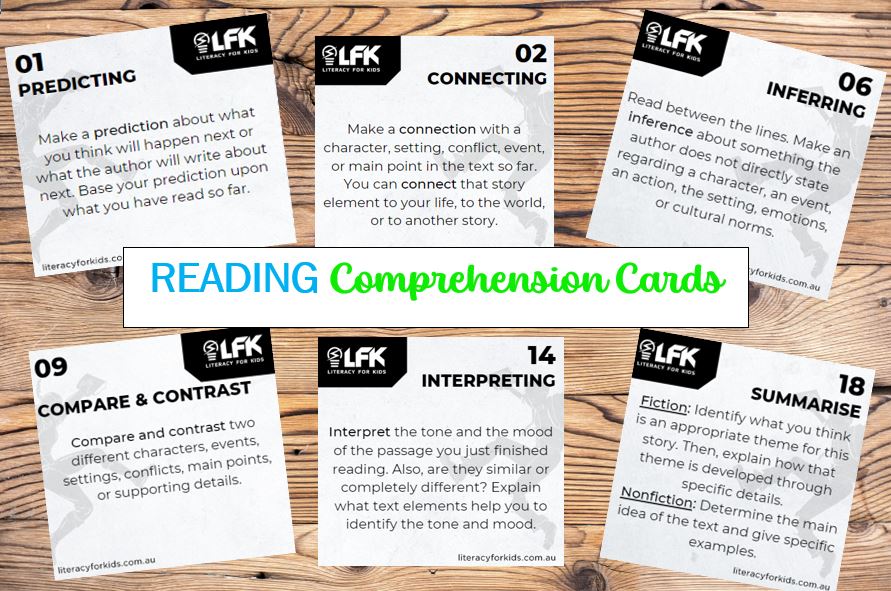LFK: Identify comprehension gaps with these reading cards

Note for Teachers and Parents
Are your students easily confused when reading texts on their own? Boost every student’s comprehension skills with these visually appealing A4 cards.
These cards make reading more interactive for kids. By ‘turning-and-talking‘, these cards get students talking about what they are reading DURING reading! These cards are an excellent way to scaffold reading comprehension, but you can also use each one after reading (except the ‘prediction’ card).
Many teachers ask their students to read texts outside of school. Older students need scaffolding when reading texts independently, and that scaffolding should come in various forms – not just annotation. If you know your students (or child) are going to examine a difficult text ~ one that you anticipate will have elements of confusion ~ it’s best if you cover the text in class (rather than assign large parts as homework). (I advise parents to also read the text independently so that you can offer help if asked!)
These cards will help every reader in your classroom. Utilise them in the following ways: students reading silently, with a partner, with a small group, listening to the teacher read, or an audio recording.
When you approach a section of the text that you think will confuse students, pause and ask them to complete as many ‘turn-and-talk’ task cards as you’d like.
Here are some ideas on how to use this resource:
- our digital copy means that you can project the questions on the screen
- ask a student to come to the front and draw a card
- ask a student to read a prompt off a card from his or her seat
- use them in literature circles
- do you use book clubs? these work well with this format
- or have them flip through the cards with a partner
Another option is to scaffold students’ independent reading experiences by assigning chapters. For example, I recently taught The Merchant of Venice. On the day the chapters were ‘due’, give each student a different card. Have the pupils get into pairs or groups according to like numbers. They can discuss their answers as groups and then report to the class. This technique has proven successful in providing a safe place for students to identify and discuss areas of confusion with complex texts.
When you use these turn-and-talk discussion task cards, you’ll get a better idea of what is confusing your students; therefore, you’ll be able to help the students get back on track and comprehend the text more efficiently.
Reading comprehension strategies targeted in this product include predicting, connecting, summarizing, visualizing, inferring, questioning, analyzing, evaluating, and more.
This product contains 18 different discussion task cards, each of which targets a different reading comprehension strategy.
What are teachers saying about our cards?
“These cards work with any story that you use! It was a great way to encourage conversation amongst my older students during an independent novel unit.” (Samantha)
“I can’t believe how well these worked in my classroom! I discovered where my students were confused by working through the cards. The floodgates for discussion opened, and I was able to simplify so much for them.” (Kelli)
Looking for a program to engage and further improve your learners’ literacy levels?
Literacy for Boys and Literacy for Kids have been adopted in schools around Australia, NZ, and the Asia Pacific. Contact us for a FREE trial in your school. See for yourself how our engaging programs are boosting literacy levels in the next generation!
Check out our blogs for more ideas and tips.
Australia’s Reading Fail: Grattan’s daming report of our literacy landscape
Super skills of Reading: How to help your child become a better reader
Steps to Successfully Support Disengaged Learners
See us featured in The Educator Australia magazine
Research confirms that early reading boosts literacy
Boys Love LFB – Here’s what they have to say!
Get boys reading in the digital age
Why write? Tips for reluctant writers
Brought to you by Tanya Grambower

